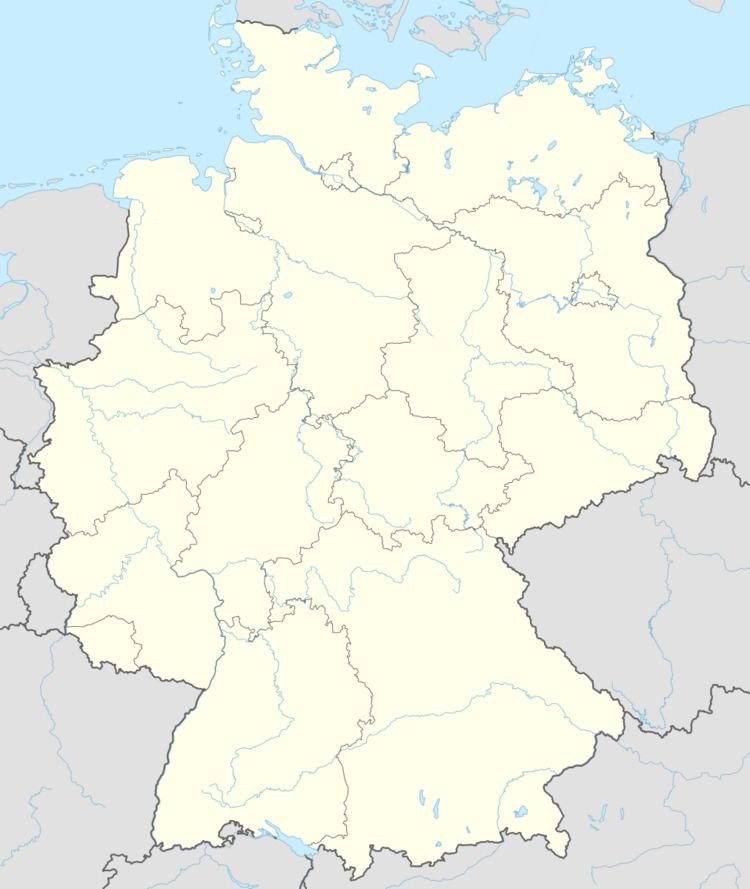Time zone CET/CEST (UTC+1/+2) Area 6.92 km² Postal code 55471 Dialling code 06761 | Elevation 355 m (1,165 ft) Postal codes 55471 Local time Sunday 9:56 PM Population 480 (31 Dec 2008) Municipal assoc. Simmern | |
 | ||
Weather 10°C, Wind W at 26 km/h, 78% Humidity | ||
Külz is an Ortsgemeinde – a municipality belonging to a Verbandsgemeinde, a kind of collective municipality – in the Rhein-Hunsrück-Kreis (district) in Rhineland-Palatinate, Germany. It belongs to the Verbandsgemeinde of Simmern, whose seat is in the like-named town.
Contents
- Map of 55471 KC3BClz Germany
- Location
- Constituent communities
- History
- Municipal council
- Mayor
- Coat of arms
- Buildings
- Sport and leisure
- Economy and infrastructure
- Education
- References
Map of 55471 K%C3%BClz, Germany
Location
Külz is a rural residential community in the Hunsrück whose buildings are somewhat spread out. The municipality lies in the Külzbach valley and has a Landesstraße (State Road) passing through it. The municipal area measures 6.92 km², of which 1.71 km² is covered by municipal woodlands. Külz lies 350 m above sea level, roughly 4 km northwest of Simmern.
Constituent communities
Külz has two outlying Ortsteile named Gass and Taubenmühle.
History
The Ortsgemeinde of Külz came into being through the merger of the Ortsteile of Eichkülz on the one hand and Külz with the Ortsteil of Gaß, the boundary between which was the Külzbach, on the other. Eichkülz lay on the brook’s right bank in the former territory governed by the provost at Ravengiersburg Monastery. The two other centres over on the brook’s left bank, however, lay in the former Imperial territory that King Albrecht pledged to Count Simon II of Sponheim in 1302. These Imperial rights were acquired shortly thereafter by the Elector of the Palatinate.
Researching Külz’s history is not easy, as besides the three forms of the name already mentioned, the forms Engeltroutkülz and Osterkülz also crop up in documents. Furthermore, Alterkülz in the Verbandsgemeinde of Kastellaun is sometimes named as In der Külze, Auf der Külze or Külz. To make matters worse, the “Külz” mentioned in 1204, 1293 and 1294 in connection with the Cistercian convent of Chumbd (Kumbd) seems to have been, not today’s Külz, but rather a now vanished village that lay on the upper reaches of the Osterkülz. Moreover, Neuerkirch once also bore the name Külz. Only when the church was built could a more exact name be applied to the village: Külz bei der Kirche (“Külz at the Church”).
The part of Külz on the left bank belonged to the parish of Neuerkirch, whereas the part on the right bank belonged to the parish of Biebern. On 30 November 1605, under a decision handed down by the Oberamt of Simmern, Eichkülz was assigned to the parish of Neuerkirch. Today, the Reformed congregation belongs to the parish of Neuerkirch and the Catholic congregation to the parish of Biebern.
Beginning in 1794, Külz lay under French rule. In 1814 it was assigned to the Kingdom of Prussia at the Congress of Vienna. Since 1946, it has been part of the then newly founded state of Rhineland-Palatinate.
Municipal council
The council is made up of 12 council members, who were elected by majority vote at the municipal election held on 7 June 2009, and the honorary mayor as chairman.
Mayor
Külz’s mayor is Aloys Schneider, and his deputies are Manfred Land and Beate Bast.
Coat of arms
The municipality’s arms might be described thus: Per fess azure a lion rampant sinister Or armed, langued and crowned gules on the line of partition, his forepaws protecting a church likewise on the line of partition ensigned with a cross on the tower and the roof of the second, the tower and the nave each with two windows in fess sable, and argent an inescutcheon throughout lozengy of the field and of the first, issuant from beneath which three palm leaves each side of the third.
The arms’ composition is drawn from Külz’s old court seal (Landeshauptarchiv Koblenz, Bestand 4, Nr. 3453). The Külzer Haufen – the Külz court – comprised not only Külz itself but also Neuerkirch and Niederkumbd.
The lozenges and the lion refer to the former landholders, the Counts Palatine of Simmern and the Electors Palatine. The church is the one in Neuerkirch, which stood in the Schultheißerei of Külz.
As to the palm leaves, their meaning is unclear. Hildegard of Bingen counted them among the healing and food plants. On the other hand, they might simply have been included as a charge to fill in what would otherwise have been two empty spaces either side of the inescutcheon.
Buildings
The following are listed buildings or sites in Rhineland-Palatinate’s Directory of Cultural Monuments:
Sport and leisure
Külz lies right on the Schinderhannes-Radweg (cycle path).
Economy and infrastructure
Külz has at its disposal a bakery, two carpentry shops, an inn with a beer garden, a filling station with a shop and a clothing shop. On a hill east of the village stands a wind farm with four Enercon E-82 turbines. Five further facilities are planned.
Education
The Ortsgemeinde of Külz, in collaboration with four other municipalities, runs a kindergarten located in neighbouring Alterkülz.
